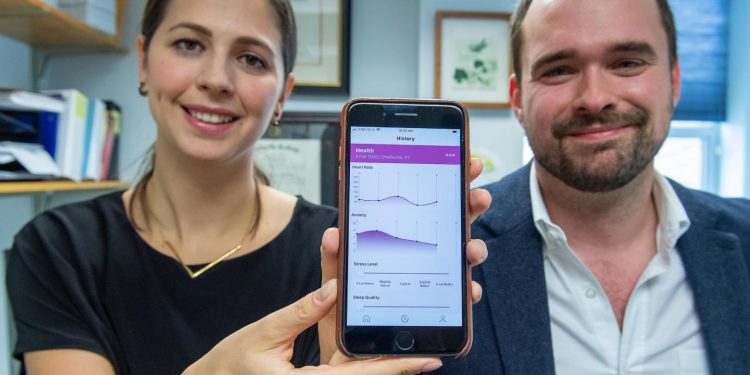New York: To help panic attack sufferers during the novel coronavirus (COVID-19) pandemic, researchers have developed an application ‘PanicMechanic’ that adapts biofeedback-like monitoring so it can be used on a mobile phone to manage their anxiety.
Biofeedback is the process of gaining greater awareness of many physiological functions of one’s own body, commercially by using electronic or other instruments, and with a goal of being able to manipulate the body’s systems at will.
The ‘PanicMechanic’ app can work at any time and in any location and is meant to be used as a supplement to professional clinical care.
‘PanicMechanic’ uses the camera on a cell phone to measure the body’s panic response, using an approach similar to photoplethysmography.
“Activating the app, then holding your finger against the flash can give you an objective measure of your reaction to stress,” said Ryan McGinnis, Assistant Professor at the University of Vermont in the US, and a co-developer of the app.
“Panic takes hold and you feel like you’re out of control of your body. By showing someone their patterns of physiological arousal, it helps them gain a sense of mastery over their panic response,” said one of the app’s developers, Ellen McGinnis.
The app also works because it gives the panic sufferer something to do during an episode.
In addition to displaying an objective measure of the body’s panic response, the app also asks, in a sequence of screens, “how much sleep and exercise you’ve had, what you ate, what your anxiety level is, and if you’ve consumed drugs or alcohol,” she said.
The screens both occupy the panic sufferer and serve a useful purpose, providing data on behaviours and triggers associated with the attack that could be avoided in the future.
The app also predicts how long the panic attack will last, based on past attacks.
That’s key, Ellen McGinnis said, because one of the most frightening aspects of a panic attack is that “it seems like it will never end.”
PanicMechanic employs machine learning to make sure the data gathered by the user on the heart is accurate.
“Our beta testing showed that people can’t always put their finger on their cell phone in free-living settings and get an accurate reading of their heart rate,” Ryan McGinnis said.
PanicMechanic helps panic attack sufferers learn to understand their panic attacks. “When they do that, working in partnership with their therapist, they’ve gone a long way toward stopping them,” Ellen McGinnis noted.
IANS







































